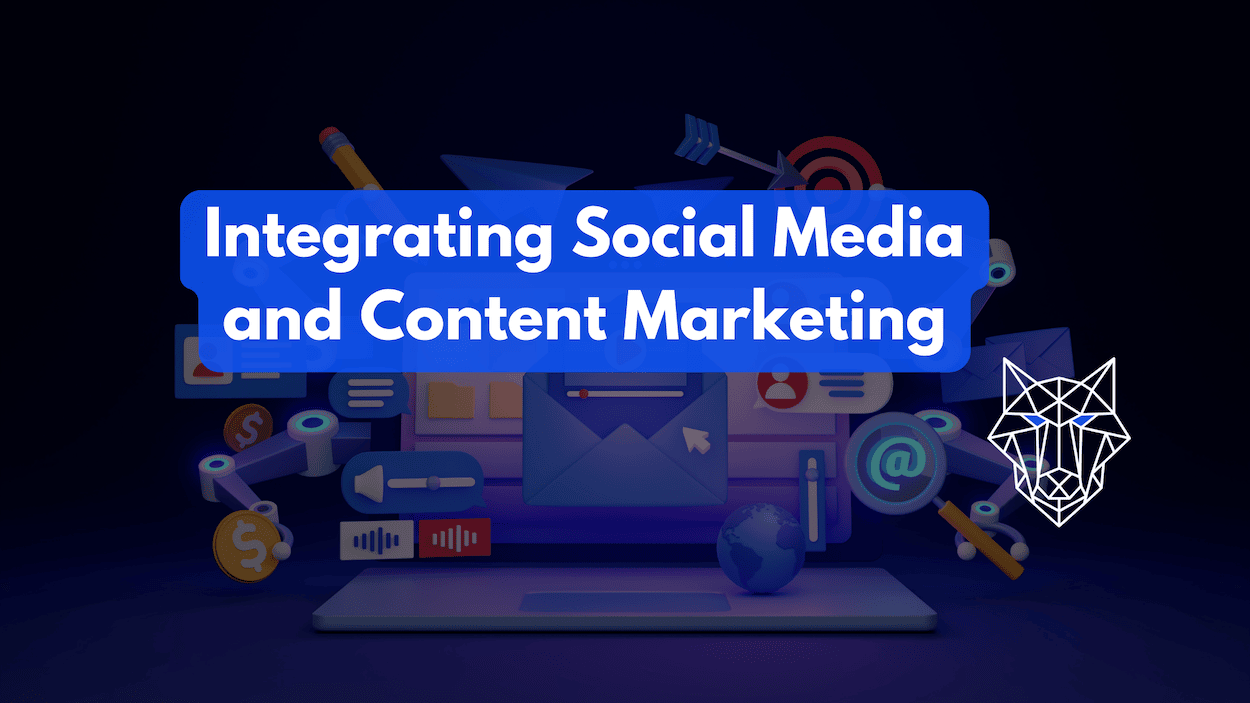Last updated on February 2nd, 2024 at 03:20 pm
The blend of social media and content marketing plays a pivotal role for businesses aiming to strengthen their online presence and actively engage with their audience. Understanding the synergy between these two strategies is key to crafting impactful, engaging, and successful marketing initiatives.
The social media landscape is constantly evolving, marked by events like Elon Musk’s changes at Twitter, potential TikTok bans, YouTube’s Shorts, and Meta’s Threads. Therefore, these shifts, along with ongoing algorithm updates, greatly affect user behavior and compel businesses to reassess their social media strategies.
Companies face a critical challenge in this fast-paced and uncertain environment: adapting their social media strategies to stay competitive. Experts at Content Marketing World addressed this challenge, offering insights on audience engagement, content creation, and process improvement.
Our guide synthesizes these expert opinions, providing practical advice and strategies for effectively integrating social media and content marketing. So let’s delve into merging social media and content marketing to create a unified, powerful strategy. This approach aims to boost engagement, strengthen brand loyalty, and propel your business’s growth in the digital world. If you’re ready to explore these exciting possibilities, let’s dive in!
Understanding Social Media and Content Marketing
Social media marketing involves promoting your brand, products, or services through platforms like Facebook, Twitter, Instagram, and LinkedIn. It’s centered around creating content that resonates with your audience, fostering interaction, and building relationships. Social media is a platform for two-way communication, allowing businesses to get immediate feedback and adapt their strategies.
Content marketing, conversely, focuses on creating and distributing valuable, relevant, and consistent content to attract and retain a defined audience. It aims to establish expertise, promote brand awareness, and keep your business in consumers’ minds. For example, this includes blog posts, articles, e-books, infographics, videos, and podcasts.
Diverse Assets Define Content Marketing
Content marketing is a wide-ranging strategy that encompasses creating, publishing, and distributing content online to reach a specific audience. It involves a variety of assets, including blogs, white papers, e-books, infographics, podcasts, webinars, and more.
The goal is to engage a particular audience with valuable content, establishing expertise, enhancing brand awareness, and keeping your business in the forefront of customers’ minds when they’re ready to make a purchase.
Social Media: Engaging in Conversations with Consumers

In contrast, social media marketing is a specialized segment of content marketing focused on engagement and interaction via social networks. Platforms such as Twitter, Facebook, Instagram, and LinkedIn are leveraged to initiate conversations with both potential and existing customers, respond to queries, and cultivate a community around your brand.
This interactive approach can boost customer loyalty and encourage word-of-mouth referrals.
Unique Strategies for Success in Social Media Marketing
Achieving success in social media marketing requires a strategy tailored to the distinct characteristics of various social platforms and how users engage with them. This involves crafting content specifically for these platforms and often demands more immediate or timely updates.
Unlike certain content marketing methods, quick responsiveness and adaptability to current trends are crucial elements in social media marketing.
Pinterest can help your business by driving traffic to your website. It’s a platform where users actively seek inspiration and ideas, so well-crafted pins that link back to your site can significantly increase visibility and sales, especially if your business is related to lifestyle, decor, fashion, food, or crafts.

Facebook is a versatile platform that allows businesses to build a community around their brand, engage with customers, and even sell products directly through the platform. Its sophisticated advertising system can target specific demographics, making it easier to reach potential customers.
Instagram is ideal for businesses that rely heavily on images and short videos. It’s a great platform for showcasing products, behind-the-scenes peeks, and even tutorials. The use of hashtags can also help increase visibility among potential customers.
LinkedIn is particularly beneficial for B2B companies. It allows businesses to establish and strengthen professional relationships, recruit new talent, and share industry insights. Sponsored content and InMail are effective ways to reach your target audience on this platform.
TikTok offers businesses a chance to reach a younger demographic creatively and engagingly. Businesses can leverage the platform’s popularity to create viral content, participate in trends, and engage with users in a more informal, authentic manner. TikTok ads are also an emerging opportunity for businesses to reach their target audience.
The Convergence of Social Media and Content Marketing
Merging social media and content marketing strategies can significantly enhance your marketing efforts. Social media platforms are perfect for disseminating and promoting content, broadening its reach, and increasing traffic to your website. By leveraging the strengths of both approaches, you create a seamless and potent marketing ecosystem.
Leveraging Social Media for Content Distribution: Utilize social media channels to distribute and promote your content, customizing it for each platform’s unique format and audience. For instance, a how-to video could be edited into a brief clip for Instagram and presented in its entirety on YouTube.
Engaging with Your Audience: Social media enables direct engagement with your audience. Participate in discussions, respond to queries, and collect feedback to refine your content strategy. A beauty brand, for example, might use Instagram polls to determine the next makeup tutorial their followers are interested in.
Amplifying Content Reach: Leverage social media to extend the reach of your content. Motivate your audience to share your content, use relevant hashtags, and collaborate with influencers. For example, an eco-friendly brand might use the hashtag #SustainableLiving to promote a blog post about sustainable practices.

Consistency Across Channels: It’s crucial to maintain a consistent brand voice and messaging across both content marketing and social media. This consistency is key to building a strong, recognizable brand identity.
Best Practices for Integrating Social Media and Content Marketing
Understand Your Audience: Customize your content and social media strategies to fit your audience’s preferences and interests. For instance, a technology company might leverage LinkedIn for B2B-focused content, highlighting industry insights and thought leadership, while utilizing Facebook for consumer-centric articles that showcase product uses and customer testimonials.
Create Quality Content: Focus on producing high-quality, informative, and engaging content. A healthcare company could create a detailed white paper on the latest medical research, while a travel agency might develop an attractive infographic outlining top travel destinations with tips and facts, both aimed at enhancing brand credibility and expertise.
Be Strategic with Social Media: Select social media platforms that align with your brand’s identity and target audience. A fashion brand could prioritize Instagram and Pinterest, platforms known for their visual appeal, to showcase their latest collections through high-quality images and style inspiration boards.
Monitor and Analyze Performance: Utilize analytics tools to assess the impact of your content on social media. For example, a food and beverage company might track the engagement on recipe videos posted on Facebook or Instagram, adjusting their content strategy based on viewer preferences and trends observed in the data.

Encourage Interaction and Feedback: Foster an interactive experience on social media. Encourage user participation by asking questions, conducting polls, and soliciting comments. A sports equipment brand, for example, could run a poll on Twitter asking followers to vote for their favorite outdoor activity or a home decor brand could encourage Instagram users to share photos of their home setups using the brand’s products.
Conclusion
Integrating social media and content marketing is about creating a unified strategy that maximizes the impact of each.
Therefore, by understanding your audience, creating quality content, using social media strategically, and continuously monitoring performance, businesses can effectively engage their audience, build loyalty, and drive growth. Embrace this integration to ensure your brand remains relevant, engaging, and ahead in digital marketing.
For your marketing needs, Wolfpack Advising, a reputable digital marketing agency, brings expertise and experience in strategies like content and social media marketing.





